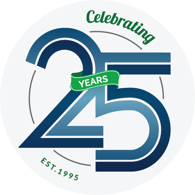- HOME
- ABOUT US
- SERVICES
- CUSTOMER STORIES
- OUR EXPERTS
- CONTACT US
- BLOG
In need of some sound digital marketing advice?
Book a free consultation with one of our experts.

Making a difference in our clients’ lives
We positively impact the lives of our clients beyond their KPI reports.
Blog Layout
As a business owner, you know that time is your most valuable asset. Yet how many hours do you spend in meetings, trying to balance active participation with furious note-taking? Or worse, how many important details slip through the cracks because you couldn't write everything down?
Enter AI notetakers – your digital assistant for capturing, organizing, and actioning all those crucial business conversations.
The Hidden Cost of Traditional Note-Taking in Business
Let's be honest: traditional note-taking costs your business more than you might realize. Beyond the obvious time spent writing things down, there's the constant context-switching between listening and writing, the risk of missing crucial details, and the hours spent decoding and sharing your notes afterward.
Think about your last important client meeting. Were you fully present in the conversation or splitting your attention between listening and writing? How much time did you spend afterward turning those hasty scribbles into actionable items? This is where AI notetakers can transform your workflow.
What Makes AI Notetakers a Game-Changer for Business Owners
Unlike enterprise-level solutions that require significant investment, today's AI notetakers are accessible and practical for small and medium-sized businesses. They work like having a highly efficient assistant in every meeting, capturing every word while you focus on what matters most – the actual conversation.
Popular AI notetakers each have their own strengths:
- Fireflies.ai: Specializes in customer relationship management (CRM) integration and sales meeting analytics. If you're heavily focused on sales and customer interactions, this tool's ability to sync with your CRM and analyze customer sentiment could be invaluable.
- Zoom AI Companion: This native solution, built directly into Zoom's platform, provides meeting summaries, smart recordings, and chat summaries. If your business primarily uses Zoom for meetings, it offers seamless integration without additional tools.
- Otter.ai: Excellent for real-time transcription and team collaboration. It's particularly strong for multi-speaker meetings and integrates well with Zoom. It is best suited for businesses that prioritize ease of use and need quick meeting summaries.
- Microsoft Teams with Copilot: Ideal if your business already uses the Microsoft ecosystem. It offers seamless integration with other Microsoft tools and provides good meeting summaries, though it comes at a higher price point.
- Google Meet with Workspace: Provides built-in recording and transcription features for businesses already using Google Workspace. While not as feature-rich as dedicated notetaking tools, it's a practical option for basic needs.
The real value comes from what happens after the meeting. Your AI notetaker doesn't just create a transcript; it:
- Automatically identifies key action items
- Highlights important decisions
- Creates summaries for easy sharing
- Tags participants and their contributions
- Makes everything searchable for future reference
When choosing between these tools, consider the following:
- Your typical meeting size and format
- Integration needs with your existing tools
- Budget constraints
- Specific features you need (like customer relationship tracking or project management integration)
- Privacy and security requirements
For most small and medium businesses, starting with a tool like Otter.ai or Fireflies.ai provides the best balance of features and cost. As your needs grow, you can explore more specialized or comprehensive solutions.
Practical Use Cases: Where AI Notetakers Shine
Client Meeting Documentation
Every client interaction contains valuable insights and commitments that can make or break your business relationships. AI notetakers transform these crucial conversations into actionable resources. Instead of frantically scribbling notes while maintaining eye contact, you can focus entirely on building rapport and understanding your client's needs.
For example, imagine you're in a complex client meeting discussing project requirements. Your AI notetaker captures every specification, concern, and commitment while you focus on strategic discussion. After the meeting, you have a searchable record of:
- Specific project requirements and timelines
- Budget discussions and agreements
- Client concerns and how you addressed them
- Action items and follow-up tasks
- Key stakeholder preferences and priorities
This detailed documentation becomes invaluable when planning project execution or handling future client requests.
Training Sessions
Employee training is a significant investment in your business's future, but traditional note-taking can create bottlenecks in knowledge transfer. AI notetakers transform training sessions into comprehensive learning resources that provide value long after the initial session.
With AI notetaking, your training sessions become:
- A permanent, searchable knowledge base for future reference
- An onboarding resource for new employees
- A way to capture spontaneous Q&A sessions that often contain valuable insights
- A tool for identifying common questions or areas needing clarification
- A method for ensuring consistent information across multiple training sessions
The real power comes from turning every training session into documented procedures and best practices, making your business more scalable and consistent.
Team Collaboration
Brainstorming and project meetings are where innovation happens, but they're also where great ideas can get lost in the shuffle of note-taking. AI notetakers transform these dynamic sessions into structured, actionable outcomes while maintaining the natural flow of conversation.
Benefits of team collaboration include:
- Complete capture of all ideas and contributions
- Automatic organization of discussion points by topic
- Clear tracking of decision-making processes
- Easy identification of action items and responsible parties
- The ability to share complete meeting records with absent team members
- Quick reference for project planning and execution
This comprehensive documentation helps maintain project momentum and ensures every team member stays aligned with project goals and responsibilities.
Board Meetings
Accuracy and completeness are essential for crucial governance meetings. AI notetakers provide a reliable record of these high-stakes discussions while maintaining appropriate confidentiality and security.
Key advantages for board meetings include:
- Detailed documentation of strategic decisions and their rationale
- Precise recording of voting outcomes and dissenting opinions
- Accurate capture of financial discussions and projections
- Comprehensive tracking of compliance-related conversations
- Easy creation of official meeting minutes
- Secure storage of sensitive information with appropriate access controls
The technology ensures that board meetings are well-documented and the information is easily accessible for future reference and audit purposes.
In each of these scenarios, AI notetakers do more than capture words – they create a valuable business asset that improves decision-making, accountability, and organizational memory. The key is choosing the right tool and implementing it in a way that enhances rather than disrupts your existing workflows.
The Numbers That Matter: Time and Cost Savings
When evaluating AI notetakers, look at the tangible impact across different organizational roles. Understanding these benefits can help justify the investment and demonstrate clear ROI.
For Business Owners
As a business owner, your time is incredibly valuable. Consider this:
- Average time spent in meetings: 15-20 hours per week
- Time spent on meeting follow-up: 5-7 hours per week
- Cost of missed details or action items: Potentially thousands in lost opportunities
With AI notetakers, you can:
- Reduce meeting follow-up time by 70%
- Improve decision-making accuracy with complete meeting records
- Focus entirely on strategic discussions rather than note-taking
- Save approximately 4-5 hours per week on administrative tasks
- Better delegate and track team responsibilities
For Project Managers
Project managers juggle multiple meetings, teams, and deliverables daily. Here's the impact:
- Traditional time spent documenting meetings: 8-10 hours per week
- Time spent creating and distributing action items: 3-4 hours per week
- Time spent searching for specific project details: 2-3 hours per week
AI notetakers provide:
- 60% reduction in time spent on meeting documentation
- Automated action item creation and assignment
- Searchable archives for quick reference
- Better project tracking and accountability
- Estimated savings of 7-8 hours per week
For Sales Teams
Sales professionals need to focus on relationship building, not note-taking. The numbers show:
- Traditional time spent on call notes: 10-12 hours per week
- Time spent updating CRM: 5-6 hours per week
- Follow-up preparation time: 4-5 hours per week
With AI notetakers:
- Reduce documentation time by 75%
- Automatically sync meeting notes to CRM
- Capture all customer requirements accurately
- Better track commitments and follow-ups
- Save approximately 15 hours per week on administrative tasks
Overall Business Impact
The cumulative impact of AI notetakers on your business extends far beyond individual time savings. Consider a team of 10 people: collectively, they could recover more than 200 hours per month of productive time previously spent on meeting-related tasks. This translates into substantial financial benefits—a business with 10 professionals could save between $40,000 and $120,000 annually in recovered productive time, assuming an average professional rate of $50 to $150 per hour. These figures significantly outweigh the investment in AI notetaking tools.
But the real value goes beyond time and cost savings. When your team spends less time on administrative tasks, they can focus on activities that directly drive business growth. Sales professionals can spend more time building client relationships, project managers can focus on strategic planning rather than documentation, and business owners can focus more on innovation and market expansion. Improved documentation accuracy leads to fewer miscommunications, better customer service, and more effective team collaboration.
Think of it this way: AI notetakers don't just save time - they create opportunities. They free your team to focus on the kind of deep, strategic work that drives business growth and innovation. Whether that means developing new products, serving more customers, or identifying new market opportunities, the value of this freed-up time and mental space can far exceed the direct cost savings.
Understanding the Limitations: What AI Notetakers Can't Do
While AI notetakers offer impressive capabilities that can transform your business operations, it's essential to approach this technology with realistic expectations. Like any tool, AI notetakers have their limitations and work best when properly supported by human oversight and good business practices. Understanding these limitations helps you implement these tools more effectively and avoid potential pitfalls.
Human Oversight Remains Essential
AI can capture and organize information but does not fully understand context or nuance like humans. For example, during a client meeting, the AI might accurately transcribe a client saying, "That timeline works," but miss the sarcastic tone that suggests they actually have concerns. Having a team member review and annotate the notes ensures these subtle but crucial details aren't missed.
Audio Quality Matters
AI notetakers rely heavily on clear audio input. In a recent project meeting, one team's AI notetaker missed crucial technical specifications because several people spoke simultaneously in a noisy conference room. For best results, ensure good audio equipment and proper microphone placement and encourage speakers to take turns—just as you would with human notetakers.
Customization Is Needed
While AI notetakers are impressive out of the box, they need training to understand your industry's specific terminology. A healthcare provider found that their AI notetaker consistently misinterpreted medical terms until they customized the vocabulary. Investment in proper setup and customization pays dividends in accuracy and usefulness.
Privacy and Security Considerations
AI notetakers handle sensitive business information, making privacy protection crucial. One financial services firm learned this the hard way when confidential client information was accidentally shared through their notetaking platform's default settings. Ensure your chosen solution meets your industry's compliance requirements and your team understands proper security protocols.
Content Organization
While AI can create transcripts and identify key points, it may not always organize information most logically for your specific needs. For instance, a marketing team may need to reorganize their AI-generated brainstorming notes into their preferred campaign planning format. Having a transparent system for organizing and tagging information remains essential.
Emotional Intelligence and Judgment
AI can capture words but can't fully replace human judgment in sensitive situations. During performance reviews or difficult client conversations, AI notes should complement, not replace, human insight and emotional intelligence. For example, an HR team should continue to add manual notes about emotional context and nonverbal cues to their AI transcripts.
Understanding these limitations doesn't diminish the value of AI notetakers—instead, it helps you use them more effectively. By acknowledging what these tools can and cannot do, you can develop workflows that maximize their benefits while maintaining the human elements crucial to business success.
Best Practices for Implementation
Successfully integrating AI notetakers into your business operations requires more than just purchasing a subscription. Here's a comprehensive guide to ensure you get the most value from these tools while avoiding common pitfalls.
- Create Clear Protocols and Guidelines
- Start by establishing clear guidelines for when and how to use AI notetakers in your organization:
- Define which types of meetings require AI transcription
- Establish procedures for handling sensitive information
- Create templates for meeting structures that work well with AI tools
- Set expectations for post-meeting review and distribution of notes
- Develop naming conventions and filing systems for easy retrieval
- Assign Clear Responsibilities
- Success with AI notetakers requires clear ownership of different aspects of the process:
- Designate someone to handle the technical setup for each meeting
- Assign specific team members to review and clean up transcripts
- Establish who's responsible for distributing meeting summaries
- Define who manages access permissions and security settings
- Identify team members who will train others on the proper use
- Optimize Your Meeting Environment
- Set yourself up for success by creating the right conditions:
- Use high-quality microphones for better audio capture
- Choose quiet meeting spaces when possible
- Ask participants to identify themselves when speaking
- Encourage clear speaking and turn-taking
- Test the setup before important meetings
- Train Your Team Effectively
- Proper training ensures everyone can use the tool effectively:
- Provide hands-on training sessions for all team members
- Create quick-reference guides for everyday tasks
- Share best practices and tips for better results
- Address privacy concerns and security protocols
- Regularly update training as new features are released
- Establish Quality Control Processes
- Maintain high standards for your meeting documentation:
- Set up a review workflow for important meetings
- Create checklists for reviewing and cleaning up transcripts
- Establish timeframes for review and distribution
- Implement feedback loops for continuous improvement
- Regular audits of meeting documentation quality
- Integration with Existing Workflows
- Ensure the AI notetaker enhances rather than disrupts your current processes:
- Connect with your existing calendar and meeting tools
- Integrate with project management systems
- Set up automated sharing with relevant team members
- Align with your document management system
- Create shortcuts and automations where possible
- Measure and Monitor Success
- Track the impact of your AI notetaker implementation:
- Monitor time saved on meeting documentation
- Track team adoption and usage rates
- Gather feedback on user satisfaction
- Measure improvements in meeting follow-through
- Calculate ROI based on time and resource savings
- Regular Review and Optimization
- Keep improving your use of the tool over time:
- Schedule regular check-ins to discuss what's working
- Identify and address any challenges promptly
- Stay updated on new features and capabilities
- Adjust protocols based on team feedback
- Share success stories and best practices across teams
Following these best practices will create a foundation for your organization's successful long-term use of AI notetakers. Remember, the goal is to enhance your team's productivity and collaboration, not to add complexity to your workflows. Regularly reviewing and adjusting these practices will ensure maximum value from your investment.
Getting Started with AI Notetakers
Ready to transform your meeting productivity? Here's how to begin:
- Choose a tool that matches your needs and budget
- Start small – perhaps with internal team meetings
- Create clear guidelines for use and review
- Monitor and measure the impact on your team's productivity
The most successful businesses today aren't just working harder – they're working smarter. AI notetakers represent a practical, accessible way to leverage AI technology for immediate business benefits. By freeing you and your team from the burden of manual note-taking, you can focus on what really matters: growing your business and serving your customers better.
Are you ready to take the next step in modernizing your business operations? Let's discuss how AI notetakers can help your specific business needs.
The Best Digital Marketing Insight and Advice
The WSI Digital Marketing Blog is your go-to-place to get tips, tricks and best practices on all things digital marketing related. Check out our latest posts.
Subscribe Blog
Thank you for contacting us.
We will get back to you as soon as possible.
We will get back to you as soon as possible.
Oops, there was an error sending your message.
Please try again later.
Please try again later.
*You may unsubscribe from digital communications at anytime using the link provided in WSI emails.
For information on our privacy practices and commitment to protecting your privacy, check out our Privacy Policy and Cookie Policy.
For information on our privacy practices and commitment to protecting your privacy, check out our Privacy Policy and Cookie Policy.
Don't stop the learning now!
Here are some other blog posts you may be interested in.

By WSI Team
•
May 23, 2025
The impact of artificial intelligence (AI) on different industries is swiftly changing, bringing more effectiveness, savings in costs, and improved decision-making. However, incorporating AI into business operations is challenging, particularly for small and medium-sized businesses (SMBs). Overcoming AI Adoption Barriers The use of AI in business isn't always easy to apply smoothly. The data from the WSI AI Business Insights Report's survey shows that 51% of people taking part mention time limitations as a significant obstacle to adopting AI, while 43% need help with how to use it. These numbers show the complicated and resource-demanding process of using AI, underlining the need for understandable guidance that can be implemented to really connect recognizing its value with really incorporating it into operations. The report also shows a crucial gap in understanding—not of AI's value, which is generally accepted, but of the practical steps needed for its successful integration. As shown by 45% of respondents expressing universal interest in learning about AI, it is clear that the main hurdles to adopting AI are practical and not primarily due to misunderstanding its value. The Role of Expert Guidance As businesses understand the transformative power of AI, there is a rising tendency to use outside resources for directions. The report indicates that 63% of participants refer to external specialists when adopting AI. This practical method shows how business owners acknowledge their need for more understanding and require help from outside professionals to guarantee an effective AI plan. Working with AI experts provides several key benefits: Deep Knowledge: AI Consultants have specific knowledge and experience, guiding businesses through the difficulties of AI technology. Customized Solutions: This involves the ability of experts to customize AI solutions for a business, ensuring that the application matches company goals and operations. Flexible Applications: Because AI can be applied in different fields and sectors, it is adaptable to various types of businesses. Efficiency and Speed: External consultants can help speed up the process of integrating AI, overcome time limitations, and quicken the journey towards AI maturity. Ongoing Assistance: AI professionals provide permanent assistance, aiding businesses in adjusting to new issues and developing AI technologies. Addressing Education and Training Needs The WSI AI Business Insights Report strongly emphasizes the importance of investing more in education and training for businesses. This includes improving understanding of AI for companies and their employees at all levels. Here are some ways to address AI education and training needs in your business: Workshops and Seminars : Organizing AI workshops and seminars is a way to offer workers basic understanding and hands-on abilities. Online Courses: Making AI courses available online allows team members to learn whenever they want, promoting a culture of constant learning. Training Across Departments: Making training programs that motivate collaboration among departments can help break down silos and boost a united method to adopt AI. Strategic AI Conversations and Business Planning Talking about strategy and planning for business is very important to ensure AI is integrated well. These conversations need to involve different departments working together so that the new AI plans match the overall business strategy and tackle the needs of various functional areas. Here are some of the strategic AI conversations you should be having in your business: AI Roadmaps: Creating thorough AI roadmaps can assist businesses in mapping out their AI adoption path, establishing achievable objectives, and efficiently managing resources. Collaborative Planning: Planning with stakeholders from different departments makes sure that many viewpoints are taken into account, resulting in more robust strategies for AI. Performance Metrics: It is important to set performance metrics and KPIs to track the advancement of AI projects and evaluate their effect on business. The Value of Working with Consultants By joining forces with skilled professionals, businesses can better handle the AI world and reach their planned goals. According to the WSI AI Business Insights Report, these are some of the benefits of working with experienced AI consultants: Expert Insights: Consultants contribute their expertise and experience to the most recent AI trends, technologies, and effective methods. Mitigation of Risk: Experts assist in identifying possible risks and difficulties connected to AI applications, allowing businesses to create methods for lessening these hazards. Scalability: When you work with consultants, your AI solutions can be easily scaled up as your business grows. For SMBs, education, collaborative strategy, and expert advice are key to fully utilizing AI's abilities. The WSI AI Business Insights Report suggests that businesses should invest in learning about AI and training for it; they need to involve themselves in essential conversations regarding artificial intelligence strategically and work with outside professionals to surpass any barriers related to adopting this technology. If SMBs embrace these success factors, they will have a better chance of competing effectively by using AI to redefine their future while ensuring all related initiatives are both strategic and successful from a financial perspective. Contact WSI today to understand how our professional AI consulting services can aid your business in dealing with the complexities of AI adoption and achieving strategic goals. Our team of professionals is available to provide the guidance and assistance necessary to attain success in this digital era.

By WSI Team
•
May 23, 2025
WSI is thrilled to announce a new strategic partnership with Amplify Voice, a pioneer in voice and conversational AI experiences for customer engagement and lead generation. This collaboration strengthens WSI’s ability to help businesses transform their digital marketing by tapping into AI-powered voice assistants, chatbots, and real-time messaging automation—all without losing the human touch. “At WSI, we’re constantly seeking out technologies that help our clients grow smarter, not just bigger,” says Valerie Brown-Dufour, President of WSI. “Amplify Voice brings something truly unique to the table—an ability to enhance customer interactions in a way that’s efficient, intelligent, and surprisingly human. This partnership fits perfectly with our strategy-first approach and enables our global network of Consultants to offer clients even more ways to create meaningful, measurable engagement.” "At Amplify Voice, we believe every conversation matters—and that each interaction should feel naturally human, seamless, and meaningful,” explains Paige Pijuan, Chief Relationships & Culture Officer of Amplify Voice. “Our AI Receptionist and AI Sales Assistant empower businesses to engage leads instantly, capture every opportunity, and consistently deliver exceptional customer experiences around the clock. Partnering with WSI amplifies our shared mission: smarter, more personal customer engagement at scale." Enabling Always-On Customer Engagement As customer expectations for instant, personalized experiences continue to rise, voice and conversational AI have become essential components of a high-performing digital strategy. With Amplify Voice, WSI’s Agencies and Consultants can now provide clients with powerful tools to build AI-powered voice and chatbots that drive real-time conversations, automate lead qualification, appointment scheduling, and customer support, and integrate seamlessly with CRMs, email marketing, and analytics platforms. Whether it’s answering FAQs at 2 am or converting leads directly from a voice assistant, Amplify Voice helps businesses engage customers where and when it matters most—without increasing workload or sacrificing quality. Turning Conversations into Conversions This partnership enhances WSI’s consultative approach to digital marketing—putting strategy first and aligning tactics like conversational AI to business goals. With Amplify Voice’s technology, WSI clients will gain access to a solution that’s built for ROI: from reducing friction in the buyer journey to increasing conversion rates through smarter interactions.

By WSI Team
•
May 23, 2025
One of the best strategies to make your website more popular is Google’s People Also Ask (PAA) section. This element appears in the search results as a box that lists multiple similar questions. Once a user clicks on a question, a small response and a link to the original source are displayed. When the section attracts your material, it can get you more visits and a better reputation for your brand. But how can you make sure your content appears in this section? Let’s explore some practical and effective strategies for your business. Understanding the PAA Box When a user enters a search query, Google will immediately insert more queries that are related to it. So, for example, if you search "seo company Toronto," Google knows that you might also want to know, "How much does SEO cost in Toronto?", "How much does it cost to hire an SEO company?" and more: This shows that featuring in the PAA section is not just a benefit in a single search. Instead, it provides numerous ongoing opportunities for increased visibility and engagement. Each time users click through the suggested questions, your content gains additional exposure, potentially leading to more traffic and a stronger online presence. Find the Right Questions To get into the PAA, you have to answer the right questions. Start by googling your main keyword and write down the PAA questions that are shown. Tools like Semrush, Ahrefs, and Surfer SEO can also help you to find the most frequently asked questions in your field of the industry. Another way is to check platforms like Quora and Reddit, where people discuss such topics. When you have a list of many frequently asked questions, try to pick the ones that fit with what your website is about and your visitors' preferences. Google gives higher rankings to articles based on the most asked queries. Thus, you will be more likely to get featured if you include those topics in your content. Write Clear and Direct Answers Google prefers concise and explicit responses that can be easily understood. The best way to be featured is to start your response with a straightforward answer in the initial sentence. The length of an ideal answer is between 40 and 60 words because it fits the Google snippet format properly. You should follow up your direct answer with a little bit of backstory or some supporting information, but the first part should be brief. Use simple language, remove the words that are not essential, and form your response clearly to the target audience. Structure Your Content Properly Even though PAA boxes mostly display plain text, making your content well-structured makes it easier to read and more likely to be featured as Google's answer box. As an example, if you are describing “How to appear in PAA?”, a response should come with a short and straight answer. Then, present a few essential but brief supporting points. A conclusion or a recap at the end of the material will increase comprehension of the information. Optimize for SEO Although the PAA results do not necessarily come from the highest-ranking pages, SEO still remains a significant factor. One of the most popular formats to get the answer is to use the target question as a subheading, which is recognized by Google. It is also beneficial to integrate relevant keywords conversationally and understandably in your response. Along with content optimization, it is essential to make your webpage both fast-loading and mobile-friendly, as Google leads to pages with a better user experience. Keep Your Content Fresh Google constantly renews search results, and staying on the top line in PAA means keeping your content current. Periodically updating old articles, tracking topics that are becoming more popular for PAA, and modifying your answers when and where necessary are a few of the best practices to follow. In addition, providing information about new or trending issues in your trade can help you gain an edge in the latest search queries. Focus on High-Quality Content A successful PAA strategy is rooted in the usage of rich content. Google prefers solutions that are genuinely helpful to users. Instead of sticking to ranking, make clear, brief, and well-organized answers your priority. Fluff must be avoided at any cost, and the aim should be getting things right and making it easy to read. Final Thoughts Getting a place in the People Also Ask box can bring a significant boost to the search and the traffic to your site. You need to give neat and structured answers, keyword optimize your article, and regularly update your website to make it more visible and possible to be included in the PAA section. The focus should be on user-friendly content that responds to users’ most frequent questions. By consistently following these strategies, you will have a significant improvement in search ranking. Need Help Getting Featured in Google's PAA Box? We specialize in optimizing content that ranks—not just on page one but in featured snippets and People Also Ask boxes. Let our SEO experts craft data-driven strategies that boost your visibility and drive qualified traffic to your site. Contact us today to elevate your search presence and stay ahead of the competition!
WSI LOCAL OFFICE
Orange County, CA
Phone: 949-216-6230
Email:
info@wsidigitalmarketingexperts.com
SOCIAL
WSI Digital Marketing Experts has been recognized as one of the Top California Digital Marketing Agencies by DesignRush
ABOUT US
CONTACT US
SERVICES
CUSTOMER STORIES
OUR EXPERTS
BLOG
© 2020 WSI. All rights reserved. WSI ICE and WSI IM are registered trademarks of RAM. Privacy Policy
and Cookie Policy
Each WSI Franchise is an independently owned and operated business.





